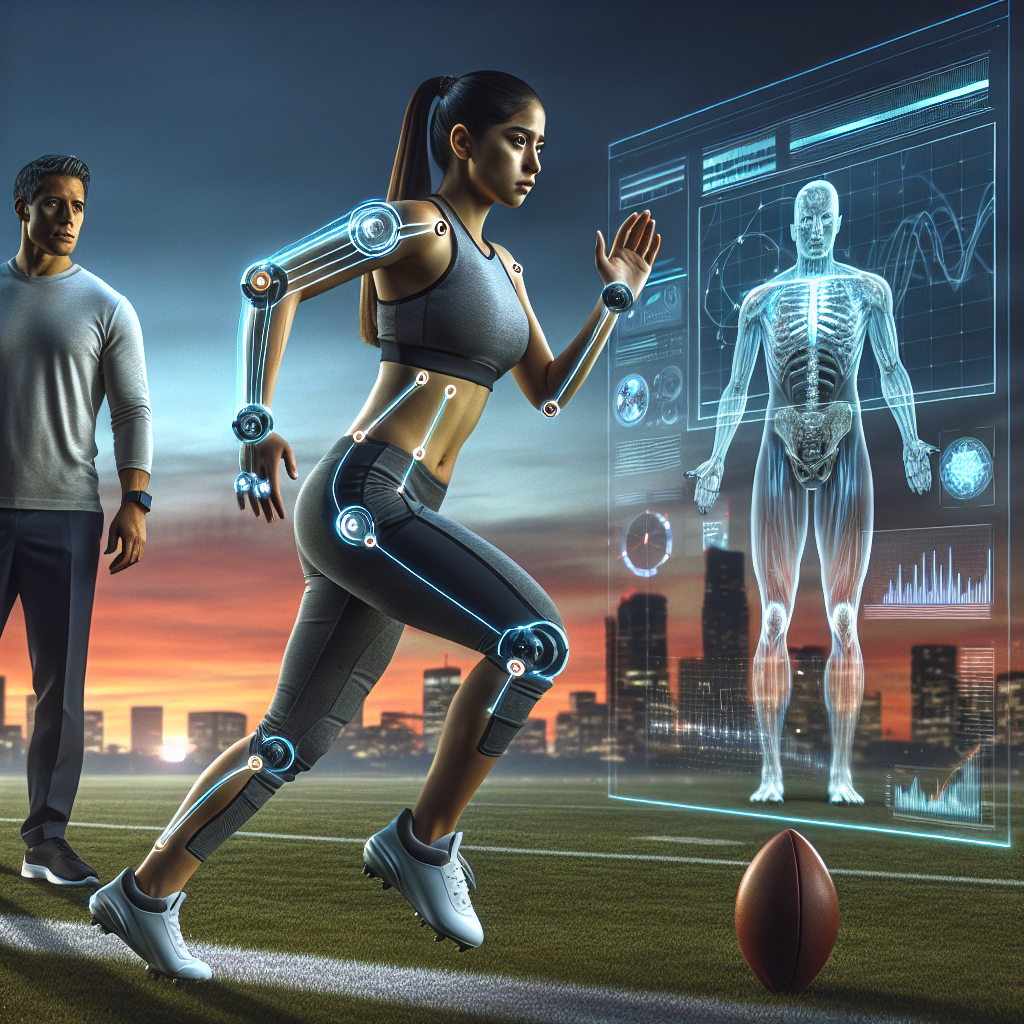In recent years, the world of sports performance monitoring has been revolutionized by the use of artificial intelligence (AI). From analyzing player movements on the field to predicting injuries before they happen, AI is transforming the way athletes train and compete. In this article, we will explore how AI is changing the game in sports performance monitoring and what the future holds for this exciting technology.
The Evolution of Sports Performance Monitoring
In the past, sports performance monitoring has relied on a combination of subjective observations and basic data collection methods. Coaches would watch players during practice and games, take notes on their performance, and use simple tools like stopwatches to track their progress. While this approach provided some valuable insights, it was limited in its ability to analyze large amounts of data and make accurate predictions.
Enter artificial intelligence. With the power of machine learning algorithms and advanced data analysis techniques, AI can now process vast amounts of data in real-time and provide coaches and athletes with actionable insights. By collecting data from sensors, cameras, and other sources, AI can track player movements, analyze their performance, and even predict potential injuries before they occur.
One of the key benefits of AI in sports performance monitoring is its ability to provide personalized feedback to athletes. By analyzing an individual player’s data, AI can identify areas for improvement and suggest specific training regimens to help them reach their full potential. This personalized approach can help athletes optimize their performance and prevent injuries, leading to better overall results on the field.
Another advantage of AI in sports performance monitoring is its ability to analyze complex data sets that would be impossible for a human to process. By using advanced algorithms, AI can identify patterns and trends in player performance that may not be apparent to the naked eye. This can help coaches make more informed decisions about strategy, player selection, and training programs, leading to improved performance on the field.
AI is also changing the way sports teams approach injury prevention. By analyzing data from sensors and other sources, AI can identify potential risk factors for injuries and help coaches and trainers develop targeted injury prevention programs. This proactive approach to injury prevention can help athletes stay healthy and on the field, reducing the risk of long-term damage and improving overall performance.
The Future of AI in Sports Performance Monitoring
As AI continues to evolve and improve, the possibilities for its use in sports performance monitoring are endless. In the future, we can expect to see even more advanced AI systems that can analyze data in real-time, provide instant feedback to athletes and coaches, and make accurate predictions about player performance.
One exciting area of development is the use of AI in sports analytics. By analyzing data from multiple sources, including player performance metrics, game statistics, and even social media data, AI can help teams make better decisions about player recruitment, game strategy, and fan engagement. This can give teams a competitive edge on and off the field, leading to more successful seasons and increased fan loyalty.
Another exciting application of AI in sports performance monitoring is the use of virtual reality (VR) technology. By combining AI with VR, teams can create immersive training simulations that allow athletes to practice in a virtual environment that mimics real-game situations. This can help athletes improve their decision-making skills, reaction times, and overall performance, leading to better results on the field.
FAQs
Q: How does AI analyze player movements in sports performance monitoring?
A: AI analyzes player movements by collecting data from sensors, cameras, and other sources, then using advanced algorithms to track and analyze the data in real-time. By identifying patterns and trends in player movements, AI can provide coaches and athletes with valuable insights into performance and potential areas for improvement.
Q: How can AI help prevent injuries in sports?
A: AI can help prevent injuries in sports by analyzing data from sensors and other sources to identify potential risk factors for injuries. By tracking player movements, analyzing performance metrics, and predicting potential injuries before they occur, AI can help coaches and trainers develop targeted injury prevention programs to keep athletes healthy and on the field.
Q: What are some of the challenges of using AI in sports performance monitoring?
A: Some of the challenges of using AI in sports performance monitoring include the need for high-quality data, the complexity of analyzing large amounts of data in real-time, and the potential for bias in AI algorithms. Additionally, there may be concerns about data privacy and security when collecting and analyzing sensitive player data.
Q: How can athletes and coaches benefit from using AI in sports performance monitoring?
A: Athletes and coaches can benefit from using AI in sports performance monitoring by receiving personalized feedback on performance, identifying areas for improvement, and developing targeted training programs. AI can also help teams make better decisions about player recruitment, game strategy, and injury prevention, leading to improved performance on the field.
In conclusion, AI is revolutionizing the world of sports performance monitoring by providing coaches and athletes with valuable insights, actionable feedback, and predictive analysis. As AI continues to evolve and improve, we can expect to see even more advanced applications of this technology in sports, leading to better results on the field and a more competitive edge for teams around the world.

